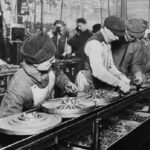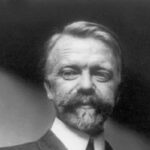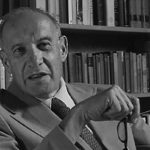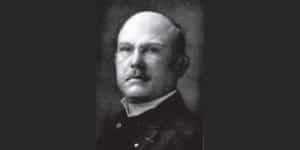Frederick Taylor biography, books and theory
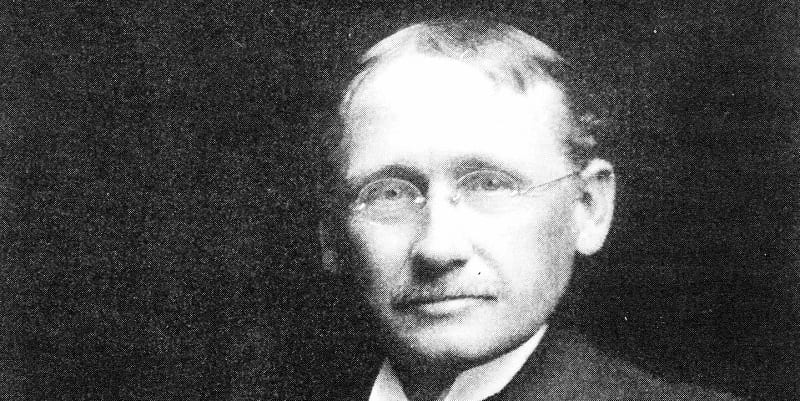
Frederick Taylor (Frederick Winslow Taylor; 1856 – 1915) was an American mechanical engineer who was always looking for efficiency improvements within the production and industrial engineering industry. Frederick Taylor was one of the first management consultants of the United States, intellectual leaders of the Efficiency Movement and founder of the term Scientific Management or Taylorism, and the Rational Goal Model or Taylor System.
Frederick Taylor biography
Frederick Taylor was educated early by his mother. He studied for two years in France and Germany and travelled Europe for 18 months.
In 1872, Taylor entered Phillips Exeter Academy in Exeter, New Hampshire, with the plan of eventually going to Harvard and becoming a lawyer like his father. In 1874, Frederick Taylor passed the Harvard entrance examinations with honours.
However, due allegedly to rapidly deteriorating eyesight, Frederick Taylor chose quite a different path. He became an apprentice pattern maker and machinist, gaining shop-floor experience at Enterprise Hydraulic Works in Philadelphia.
After six months he left his apprenticeship within this industrial management company and represented a group of New England machine-tool manufacturers at Philadelphia’s centennial exposition. Frederick Taylor finished his four-year apprenticeship and in 1878 became a machine-shop labourer at Midvale Steel Works.
At Midvale, he was quickly promoted to time clerk, journeyman machinist, gang boss over the lathe hands, machine shop foreman, research director, and finally chief engineer of the works. His fast promotions reflected not only his talent within industrial management but also his family’s relationship with Edward Clark, part owner of Midvale Steel.
Early on at Midvale, working as a labourer and machinist, Frederick Taylor recognized that workmen were not working their machines, or themselves, nearly as hard as they could and that this resulted in high labour costs for the company.
When Frederick Taylor became a foreman he expected more output from the workmen. In order to determine how much work should properly be expected, he began to study and analyse the industrial engineering productivity of the managers and workers and the machines. His focus on the human component of production Taylor labelled scientific management.
Frederick Taylor became a student of Stevens institute of technology, studying via correspondence and obtaining a degree in mechanical and industrial engineering in 1883.
The developement of Scientific Management
From 1890 until 1893 he worked as a general manager and a consulting engineer to management for the Manufacturing Investment Company of Philadelphia, a company that operated large paper mills in Maine and Wisconsin. He spent time as a plant manager in Maine.
In 1893, Frederick Taylor opened an independent consulting practice in Philadelphia. Through these consulting experiences, Taylor perfected his management system.
Between 1898 en 1901 Frederick Taylor helped Bethlehem Steel in order to solve an expensive machine-shop capacity problem. As a result, he and Maunsel White, with a team of assistants, developed high speed steel, paving the way for greatly increased mass production.
After leaving Bethlehem Steel, Frederick Taylor focused the rest of his career on publicly promoting his management and machining methods through lecturing, writing, and consulting. In 1910, owing to the Eastern Rate Case, Frederick Winslow Taylor and his Scientific Management methodologies become famous worldwide
In 1911, Frederick Taylor introduced his “The Principles of Scientific Management” paper to the American mechanical engineering society, eight years after his Shop Management paper. He is known for these principles that are also called Taylorism, among with the Rational Goal Model theory or Taylor System.
On October 19, 1906, Frederick Taylor was awarded an honorary degree of Doctor of Science by the University of Pennsylvania Frederick Taylor eventually became a professor at the Tuck School of Business at Dartmouth College.
In early spring of 1915 Frederick Winslow Taylor caught pneumonia and died, one day after his fifty-ninth birthday, on March 21, 1915.
Famous quotes
- “Hardly a competent workman can be found who does not devote a considerable amount of time to studying just how slowly he can work and still convince his employer that he is going at a good pace.”
- “After a workman has had the price per piece of the work he is doing lowered two or three times as a result of his having worked harder and increased his output, he is likely to entirely lose sight of his employer’s side of the case and to become imbued with a grim determination to have no more cuts if soldiering can prevent it.”
- “In the past the man has been first; in the future the system must be first. This in no sense, however, implies that great men are not needed. On the contrary, the first object of any good system must be that of developing first-class men.”
- “The principal object of management should be to secure the maximum prosperity for the employer, coupled with the maximum prosperity for each employee.”
- “It is only through enforced standardization of methods, enforced adoption of the best implements and working conditions, and enforced cooperation that this faster work can be assured. And the duty of enforcing the adoption of standards and enforcing this cooperation rests with management alone.”
Publications and books by Frederick Taylor et al.
- 1912. Concrete costs. J. Wiley and sons.
- 1911. The Principles of Scientific Management. Harper and brothers.
- 1911. A treatise on concrete, plain and reinforced: materials, construction, and design of concrete and reinforced concrete. (2d ed). New York, J. Wiley & sons.
- 1906. On the Art of Cutting Metals. Transactions of the American Society of Mechanical Engineers, Vol. XXVIII, 1906, pp. 31–350.
- 1903. Shop management. Transactions of the American Society of Mechanical Engineers 24: 1337-480.
- 1895. A Piece-rate System in: The adjustment of wages to efficiency; three papers.
- 1894. Notes on Belting. Transactions of the American Society of Mechanical Engineers, Vol. XV, 1893, pp. 204–259.
How to cite this article:
Van Vliet, V. (2015). Frederick Taylor. Retrieved [insert date] from Toolshero: https://www.toolshero.com/toolsheroes/frederick-taylor/
Original publication date: 12/06/2015 | Last update: 03/19/2024
Add a link to this page on your website:
<a href=”https://www.toolshero.com/toolsheroes/frederick-taylor/”> Toolshero: Frederick Taylor</a>


